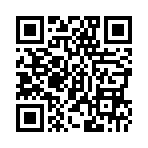VOA Radiogram for the weekend of 21-22 June 2014
Before RSID: <<2014-06-22T02:31Z MFSK-22 @ 1499>>
Welcome to program 64 of VOA Radiogram from the VoikeDo«Åica.
I'm Kim Andrew Elliott in Washington.
Here is the lineup for today's program (MFSK32 centered on 1500 Hz):
1:36 Program preview (now)
2:41 Subsurface ocean on Pluto's moon, with image
9:57 Indonesian smartphone use surges, with image
15:54 Designing buildings to withstand disasters, with image
21:22 Al Jazeera reporter released from Egyptian prison, with image
26:32 Closing announcements
Please send reception reports to radiogram@voanews.com.
And visit voaradiogram.net.
Twitter: @VOARadiogram
VOA NEWS
Ancient Subsurface Ocean Could Have Flowed on Pluto's Moon Charon
Matthew Hilburn
June 16, 2014 3:32 PM
Pluto's moon Charon may have once had subterranean oceans of
liquid water, something the U.S. space agency NASA hopes to
investigate further when its New Horizons spacecraft swings by
just over a year from now.
The notion that there could have been liquid water on a body 29
times further away from the sun than Earth seems far fetched
given the surface temperature on Charon is minus 229 Celsius, but
NASA scientists say that because the moon may have had an
"eccentric," or slightly oval-shaped orbit, Pluto's gravity may
have caused the interior of the moon to flex, causing enough heat
to melt ice.
This phenomenon is believed to be the reason for potential
subsurface oceans of liquid water on Jupiter's moon Europa and
Saturn's moon Enceladus.
NASA hopes New Horizons will be able to provide a detailed
analysis of crack patterns on Charon in order to see if there was
once water underneath the surface.
"Our model predicts different fracture patterns on the surface of
Charon depending on the thickness of its surface ice, the
structure of the moon's interior and how easily it deforms, and
how its orbit evolved," said Alyssa Rhoden of NASA's Goddard
Space Flight Center in Greenbelt, Maryland, in a statement. "By
comparing the actual New Horizons observations of Charon to the
various predictions, we can see what fits best and discover if
Charon could have had a subsurface ocean in its past, driven by
high eccentricity."
Charon is the largest moon in the solar system relative to its
planet (dwarf planet in Pluto's case), with one-eighth of Pluto's
mass. Scientists think it was formed after an impact on Pluto
caused debris to orbit and gather into several moons.
Researchers said that when Charon initially formed, the gravity
between the two bodies would have been enough to cause "their
surfaces to bulge toward each other, generating friction in their interiors."
"Depending on exactly how Charon's orbit evolved, particularly if
it went through a high-eccentricity phase, there may have been
enough heat from tidal deformation to maintain liquid water
beneath the surface of Charon for some time," said Rhoden. "Using
plausible interior structure models that include an ocean, lj sä hØt wouldn't have
taken much eccentricity to generate
surface fractures like we are seeing on Europa."
However, the days of liquid water on Charon, if they ever
existed, are long over.
The moon's orbit is now circular and slower, researchers said.
Plus, only one side of Charon faces Pluto. Together this would
mean that no significant gravitational tides would be generated
thus causing any would-be ocean to freeze.
Alan Stern, the principal investigator of NASA's New Horizons
mission and and a planetary scientist at the Southwest Research
Institute in Boulder, Colorado wrote in an email to VOA that the
study "shows just how exciting Pluto's moons could be."
"We're looking forward very much to exploring this planet and its
satellite system for the first time next year with New Horizons
to see what they are really like," he wrote.
Rhoden's research appears in the online journal Icarus.
http://www.voanews.com/content/pluto-moon-charon-liquid-water/1938203.html
Image: This artist concept shows Pluto and some of its moons, as
viewed from the surface of one of the moons. Pluto is the large
disk at center. Charon is the smaller disk to the right.

Sending Pic:204x170C;
This is VOA Radiogram from the Voice of America.
Please send reception reports to radiogram@voanews.com.
VOA NEWS
Indonesian Smartphone Usage Surges but Still Lags
Alina Mahamel
June 16, 2014 3:41 PM
JAKARTA - A new Nielsen Survey Study reveals that smartphone
ownership continues to surge in Indonesia.
The survey shows smartphone ownership has risen up by 5 percent
over the previous year, according to Anil Anthony, Consumer
Insight executive director of Nielsen Indonesia.
"In urban Indonesia, the penetration of smartphones is 23
percent, which [means] one-in-four people has a smartphone," he
said. "That is quite low when we compare [it] with other
developing countries in Asia, but better than India and the Philippines."
The survey of 1,900 participants was conducted over the course of
2013 in several big cities, including Medan, Bandung, Surabaya,
and Makasar.
Uday Rayana, a communications observer in Jakarta, questions if
rising smartphone usage is a positive sign.
"Actually this is due to the smartphones spectacular growth which
now has become part of our lifestyle and in accordance with our
behavior of hanging out together and establishing communities,"
he said. "But the question is how productive are these kinds of
social media activities?"
Karania, a human resources professional staffer in a business
firm, told VOA that her smartphone has helped her in her job.
"When I have free time, I always spend it by using my phone", she
said, adding that most of her smartphone activities involve
chatting and browsing the Internet.
Meanwhile, Eggi, who lives in a Jakarta suburb and runs an online
food business, says his smartphone helps him interact with his customers.
"Mostly I use my smartphone for my business," he said.
According to the study, average Indonesian smartphone users spend
more than two hours daily on their phones, with most of the time
spent chatting, browsing or using Internet apps.
The Nielsen Survey states that, on average, women spend more time chatting than men.
The survey said young adults between 25-30 are the most active
smartphone users and spend most of their time talking on the phone.
The level of smartphone usage reaches its peak after office hours.
According to a Nielson report last year, usage varies wildly
between countries in East Asia. Some, such as Singapore and
Malaysia, have a smartphone penetration exceeding 80 percent,
while the Philippines stands at just 15 percent and India at 18
percent.
(This report was produced in collaboration with the VOA Indonesian service.)
http://www.voanews.com/content/indonesian-smartphone-usage-surges-but-still-lags/1938198.html
Image: A Blackberry Z3 smartphone is shown by a model during its
launch in Jakarta, Indonesia, May 13, 2014. The Z3 is priced at
(US $200) in the country.

Sending Pic:186x136C;
bp dleetYK
Before RSID: <<2014-06-22T02:45Z MFSK-32 @ 1499>>
This is VOA Radiogram from the Voice of America.
Please send reception reports to radiogram@voanews.com.
VOA NEWS
Designing for Disaster Helps Save Lives, Property
George Putic, KI4FNF
June 16, 2014
Natural disasters -- tornados, tauytÐaehsþu=nbQqu¾plndeoudUbeo§ ®1ccur frequeit
Wften unexpenu.lyfxfn¾c otatre, e' bgv ôcdtaTt6 (y h teo# ai ooperty and li
¹'ntnebtnioI fqoe p bnoRDtatMuseum showcases some of these technoloteees.
For example, large buildings and other structures can withstand
even strong earthquakes if they are built with some degree of flexibility.
"We need to let buildings move and we can actually understand
where they might fail and then go in and design buildings with
that in mind," said exhibition curator Chrysanthe Broikos.
The so-called special moment frame,' allows a degree of movement
at points where large load-bearing beams join each other.
Rubberu; < Yn anvion blocks let buildings sway, while huge
shock absorbers dampen vibrations.
A model of the wind wall, built at the International Hurricane
Research Center, in Florida, shows how certain types of roofs are
more vulnerable than others to the strong winds of tornados and
hurricanes.
For example, a hipped roof shape withstands better than the flat
roof or the gableWotgkrding to Broikos.
In areas affected by strong winds, scientists also recommend
having at least one safe room' where inhabitants can spend the
most dangerous part of the storm.
To keep storm surges in check, some communities along the U.S.
coasts and river banks built artificial reefs, using not just
rocks but also oyster shells, collected from restaurants.
"It turns out that oyst¿ efs actually help to attenuate wave
action," said Broikos. "They also help with soil erosion."
Broikos also says building parks along the shoreline, instead of
houses, is more natural and keeps valuable property away from danger.
As for forest fires, scientists now recommend that a so-called
home ignition zone be about 60 meters wide.
"What that means is trying to keep that area free of material
that easily combusts," Broikos said.
Some natural disasters cannot be prevented but researchers say
advance planning and timely investment can provide the same sort
of protection as applying sunblock lotion before going to the beach.
Text and video:
http://www.voanews.com/content/designing-for-disaster-helps-save-lives-property-/1937886.html
Image: Example of a hipped roof, said to be more resistant to
high winds than gable or flat roofs.

Sending Pic:211x107C;
This is VOA Radiogram from the Voice of America.
Please send reception reports to radiogram@voanews.com.
Egypt Releases One Al Jazeera Reporter
VOA News
June 17, 2014 4:52 PM
An Al Jazeera Arabic reporter was released from an Egyptian
prison Tuesday, 10 months after being arrested and held without
charge in a case that prompted serious criticism of Egypt's
military-led government.
The Qatar-based satellite channel said Abdullah Elshamy was
transÜ evt a Cairo policee2eafter being set free from
the notorious, high-security Scorpion prison.
Egypt's prosecutor general on Monday had ordered his release,
citing "health conditions."
The 26-year-old was met by his mother, wife and brothers as he
walked out of the police station in a northern Cairo suburb, The
Associated Press reported. Witnesses say the once robust Elshamy
looked frail as he exited the facility.
"The appeal which was accepted by the public prosecution was
based on the fact that Abdullah was carrying out his duties as a
correspondent for Al Jazeera at the time of his arrest," an Al
Jazeera lawyer Shaaban Saeed said.
Elshamy was arrested on August 14, 2013, while reporting the
police dispersal of sit-in protest in Cairo. In January, he went
on hunger strike to protest his detention.
His arrest coincided with a wide crackdown on Islamist supporters
of President Mohammed Morsi, who was overthrown by the military last year.
Egyptian officials have accused the channel of supporting the
Muslim Brotherhood, an organization and political party that has
been labeled a terrorist organization by the Egyptian
government. The network has denied the allegations.
Al-Jazeera calls Elshamy's freedom a relief rather than a cause
for celebration. It says he has been through a terrible ordeal,
and it thanked all who supported Elshamy, including the White
House and European Union.
Al-Jazeera is demanding that Egypt free three English language
journalists who remain jailed for allegedly spreading false news
- Peter Greste, Baher Mohamed and Mohamed Fahmy.
Some information for this report comes from AP, AFP and Reuters.
http://www.voanews.com/content/egypt-al-jazeera-reporter-freed/1939166.html
Image: Al Jazeera Arabic service reporter Abdullah Elshamy is
greeted by friends and family after being released from a Cairo
prison Tuesday evening, June 17, 2014. (VOA / Hamada Elrasam)

Sending Pic:205x116C;
eR ii fFow
Before RSID: <<2014-06-22T02:56Z MFSK-32 @ 1499>>
Please send reception reports to radiogram@voanews.com.
And visit voaradiogram.net.
Twitter: @VOARadiogram
Thanks to colleagues at the Edward R. Murrow shortwave
transmitting station in North Carolina.
I'm Kim Elliott. Please join us for the next VOA Radiogram
This is VOA, the Voice of America.
Before RSID: <<2014-06-22T02:56Z MFSK-32 @ 1499>>
Sending Pic:209x19C;

Before RSID: <<2014-06-22T02:57Z MFSK-64 @ 1499>>
Thank you for decoding the modes on VOA Radiogram.

